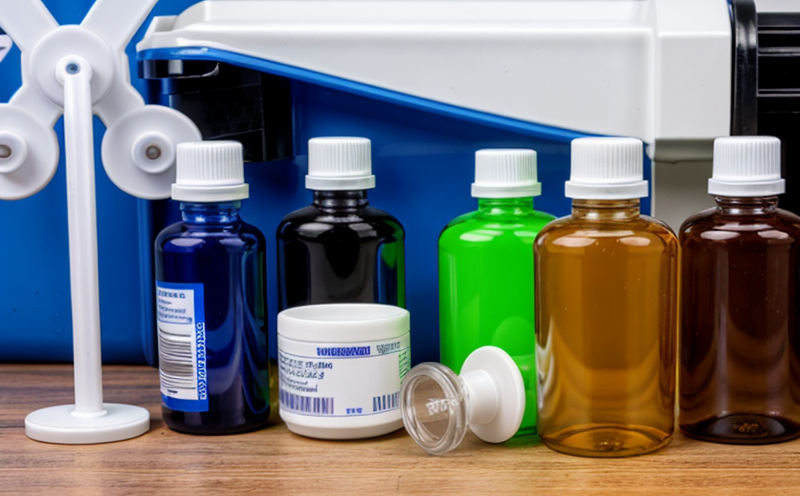EN 16208 Chromium in Medical Waste
The European standard EN 16208 provides a robust framework for quantifying chromium levels within medical waste. This service is particularly crucial for compliance with regulatory requirements and ensuring the safe handling of medical waste. Compliance with this standard is essential, especially given the increasing awareness of environmental impact and health implications associated with medical waste.
The primary focus of EN 16208 is to establish a method for determining the total chromium content in healthcare waste through digestion with nitric acid followed by colorimetric analysis. This method ensures accurate quantification which is critical not only from a regulatory standpoint but also for internal quality control processes within laboratories and medical facilities.
The standard applies to all types of medical waste, including sharps, gauze, gloves, surgical instruments, and other potentially hazardous materials that may contain chromium. The chromium present in these wastes can originate from various sources such as the materials used in manufacturing healthcare products or from environmental contamination during disposal.
Understanding the levels of chromium in medical waste is vital for several reasons:
- To comply with international standards and regulations aimed at protecting both human health and the environment.
- To ensure that waste management practices are optimized to minimize any potential risks associated with chromium exposure.
- To support research efforts in understanding how different types of medical waste contribute to overall environmental pollution.
The process described by EN 16208 involves rigorous sample preparation and analysis steps designed to yield precise results. Samples are first digested using nitric acid, which helps break down complex compounds into simpler ones that can be analyzed more easily. Following digestion, the solution undergoes colorimetric determination of chromium content.
It is important to note that accurate measurement requires meticulous sample handling and precise instrumental calibration. Inadequate preparation or incorrect instrument settings could lead to significant deviations from actual values, potentially leading to non-compliance with standards and increased operational costs due to unnecessary corrective actions.
The importance of this service extends beyond mere compliance; it plays a key role in fostering trust between healthcare providers, regulatory bodies, and the public. By adhering to EN 16208, organizations demonstrate their commitment to sustainability and safety, thereby enhancing their reputation and building stronger relationships with stakeholders.
In conclusion, implementing EN 16208 for chromium testing in medical waste is not just a legal obligation but also an opportunity for facilities to enhance their operational efficiency while contributing positively towards environmental conservation efforts. This service ensures that all parties involved are working together towards a common goal of responsible management and disposal practices.
Applied Standards
The European standard EN 16208 is widely recognized for its comprehensive approach to measuring chromium content in medical waste. This standard specifies the analytical procedures necessary to achieve accurate results consistently across different laboratories and testing conditions.
The methodology outlined in EN 16208 involves several key steps:
- Sampling: Appropriate sampling techniques must be employed to ensure representativeness of the sample taken from the waste stream. This includes considering various categories of medical waste such as sharps, gauze, gloves, etc.
- Digestion: Samples are digested using nitric acid at specific temperatures and durations to convert organic matter into simpler forms amenable for analysis.
- Colorimetric Determination: After digestion, the solution is subjected to colorimetric determination of chromium content. This involves comparing absorbance readings against known standards to calculate concentrations accurately.
The standard also provides detailed information on the equipment needed, including specific brands and models recommended for optimal performance during analysis. Compliance with EN 16208 ensures that results obtained are comparable worldwide, facilitating international collaboration among healthcare providers and regulatory bodies.
Furthermore, the standard emphasizes quality assurance measures such as regular calibration of instruments used in testing, participation in proficiency tests organized by recognized organizations, and continuous training for personnel involved in conducting these analyses. These practices help maintain high standards throughout all stages of the analytical process.
Customer Impact and Satisfaction
Implementing EN 16208 chromium testing services brings tangible benefits to customers across various sectors, including healthcare providers, regulatory bodies, and environmental organizations. Here’s how:
- Regulatory Compliance: By adhering strictly to the requirements set forth by EN 16208, clients ensure they are meeting legal obligations related to waste management practices.
- Risk Mitigation: Accurate chromium testing helps identify potential risks associated with high levels of chromium in medical waste. Early detection allows for prompt corrective actions reducing the likelihood of adverse effects on human health and ecosystems.
- Sustainability: The service promotes sustainable practices by ensuring that medical waste is managed responsibly, minimizing its environmental footprint.
- Reputation Enhancement: Demonstrating commitment to best practices enhances an organization's reputation among clients, partners, and the broader community. It shows leadership in addressing critical issues like chromium pollution.
A satisfied customer base translates into long-term partnerships based on trust and mutual respect. Positive feedback from our clients reinforces our dedication to providing reliable, accurate testing services that meet international standards.
Competitive Advantage and Market Impact
- Innovation Leadership: Adherence to EN 16208 positions organizations at the forefront of innovation within their respective industries. Being among the first adopters gives them a strategic advantage over competitors.
- Premium Services: Offering specialized tests like those specified in EN 16208 can be marketed as premium services, attracting clients willing to invest in quality assurance and sustainability initiatives.
- Market Differentiation: Providing comprehensive compliance solutions tailored specifically to the needs of healthcare providers sets one apart from generic offerings. This differentiation makes it easier for companies to secure contracts with stringent regulatory requirements.
- Client Retention: Consistently delivering high-quality results builds lasting relationships, fostering loyalty and repeat business.
By leveraging EN 16208 as part of their service offering, organizations can significantly enhance their competitive position in the market. They become trusted partners who not only meet but exceed expectations set by regulatory bodies worldwide.





